
Base price: $45.
2 – 7 players.
Play time: ~45 minutes.
BGG Link
Buy on Amazon (via What’s Eric Playing?)
Logged plays: 8
Full disclosure: A review copy of The Great Split was provided by Flat River Games / Horrible Guild.
I keep thinking it’s July, for some reason, and it’s only somewhat June. Oh well. I actually prefer it not being July, specifically because once it hits July it’s almost convention season, and once it hits convention season I’m busy forever. So I have a little window of time to get a bunch of reviews written, and now we’re here, consistently a little behind. It’s half the fun of it, in my opinion, but there are always more games to talk about. So let’s talk about games! I’ve got The Great Split, a (somewhat) recent release from my faves at Horrible Guild, so let’s try it out!
In The Great Split, players are working actively to build collections of note and prestige, as one does. However, as everyone knows, sharing is important, so you’ll be giving away and receiving fancy objects over the course of the game! How you divide things is up to you, but you best not risk offering bad deals, or you’ll end up on the receiving end! How will you divide and conquer?
Contents
Setup
Surprisingly little. Set the main board in the center:
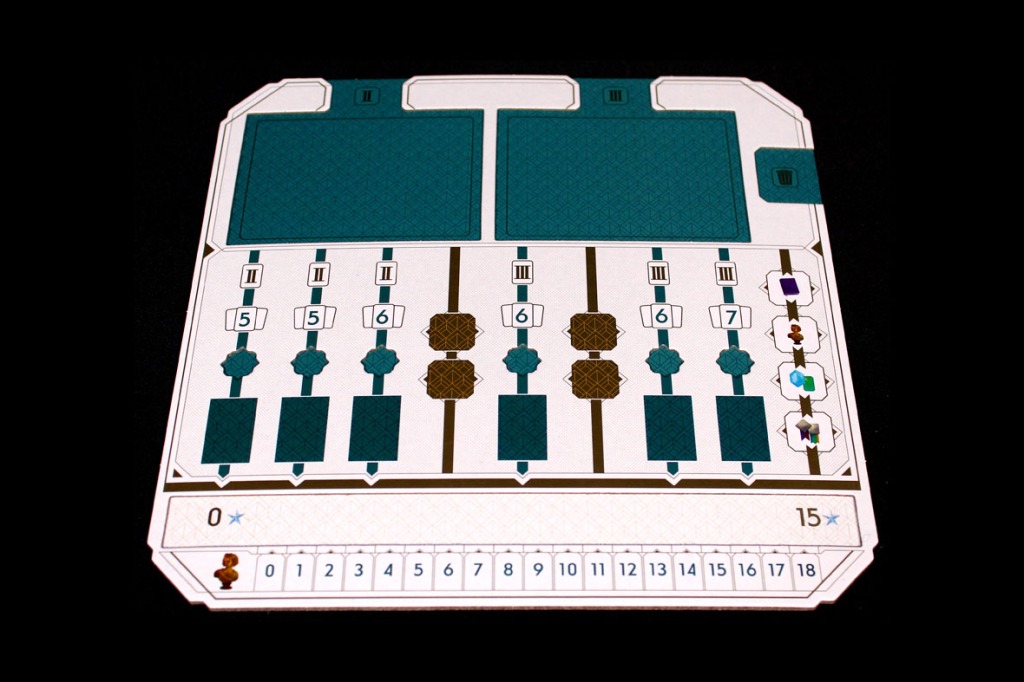
You’ll shuffle up the various cardboard chits, placing the four Scoring Tokens face-up in their various spots, The Market tokens get placed face-down. Each player then gets a Player Board:
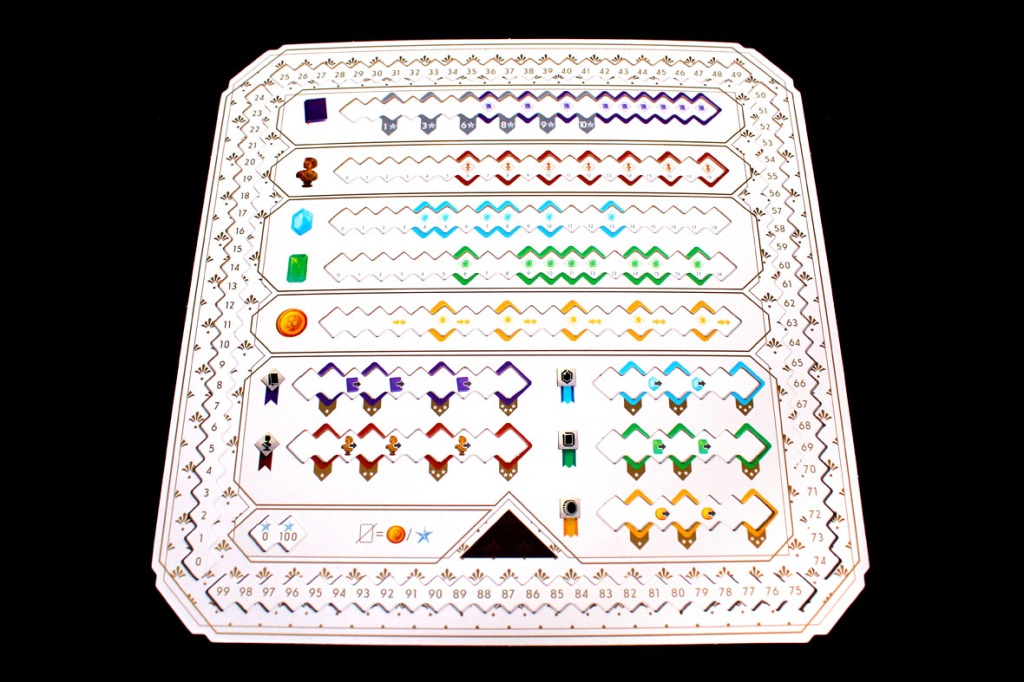
They also get two white cubes, five silver cubes, and a cube of each color:
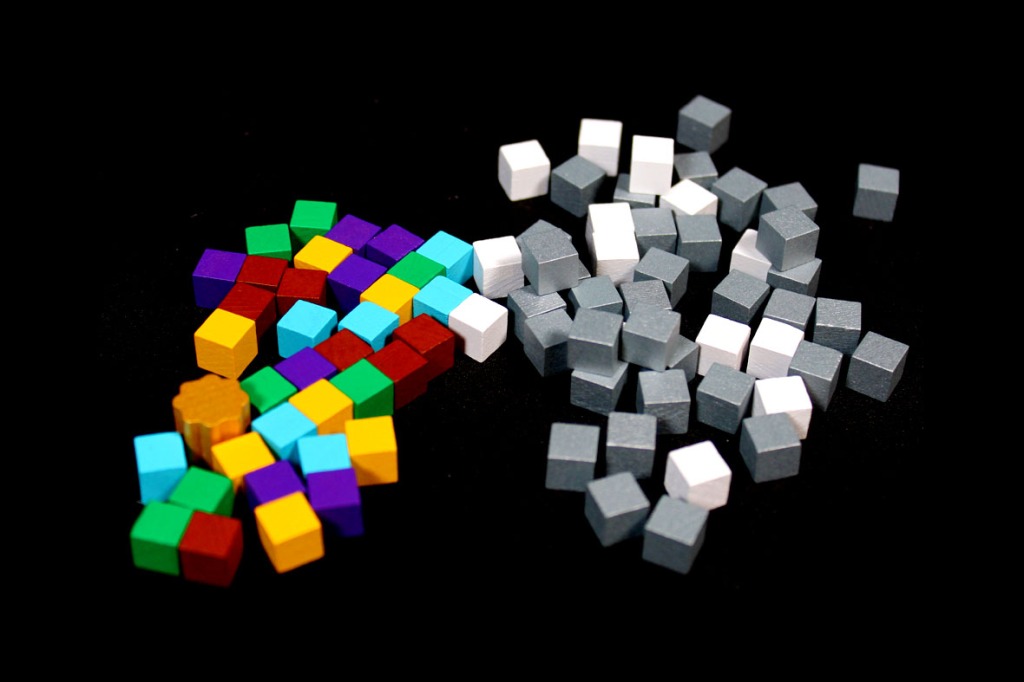
The white cubes go on the 0s, the silver cubes go on the left edge of each Contract Track on the bottom half of their board, and the colorful cubes go on the corresponding left tracks on the top of their player board. Then, give each player a character:
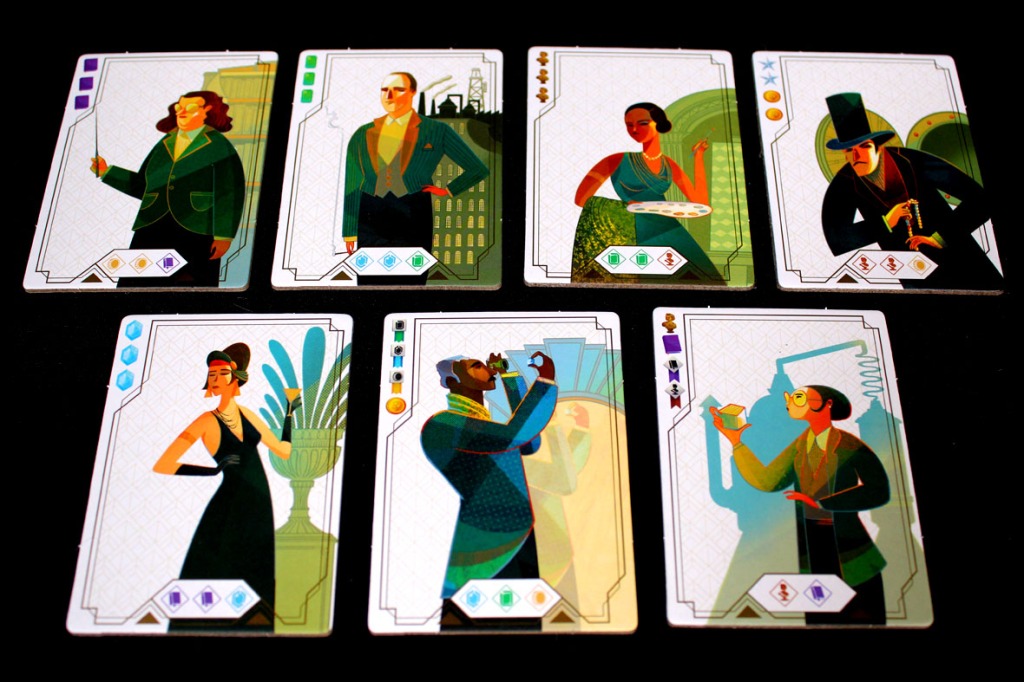
Increment your various cubes based on what starting resources the characters have on their tiles and keep an eye on which Contracts they have for later! Each player gets a wallet matching their player board color and a Splitter Card. Place the Round Marker in the first space and the Market Tile on the left side of the main board. Finally, shuffle each Era of cards:
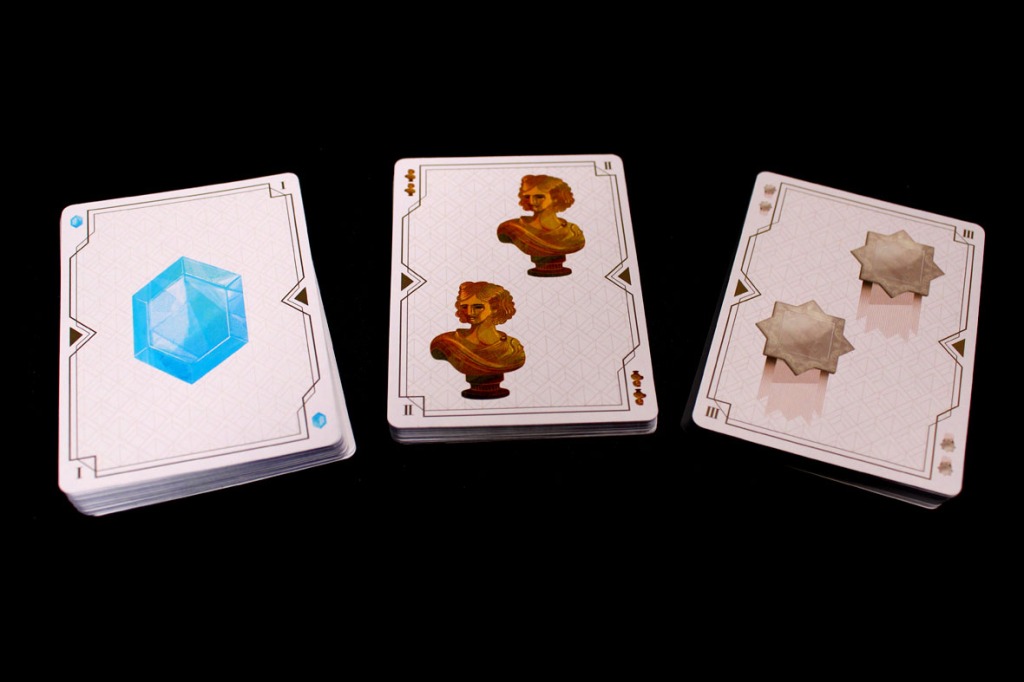
Deal each player four. You should be ready to start!
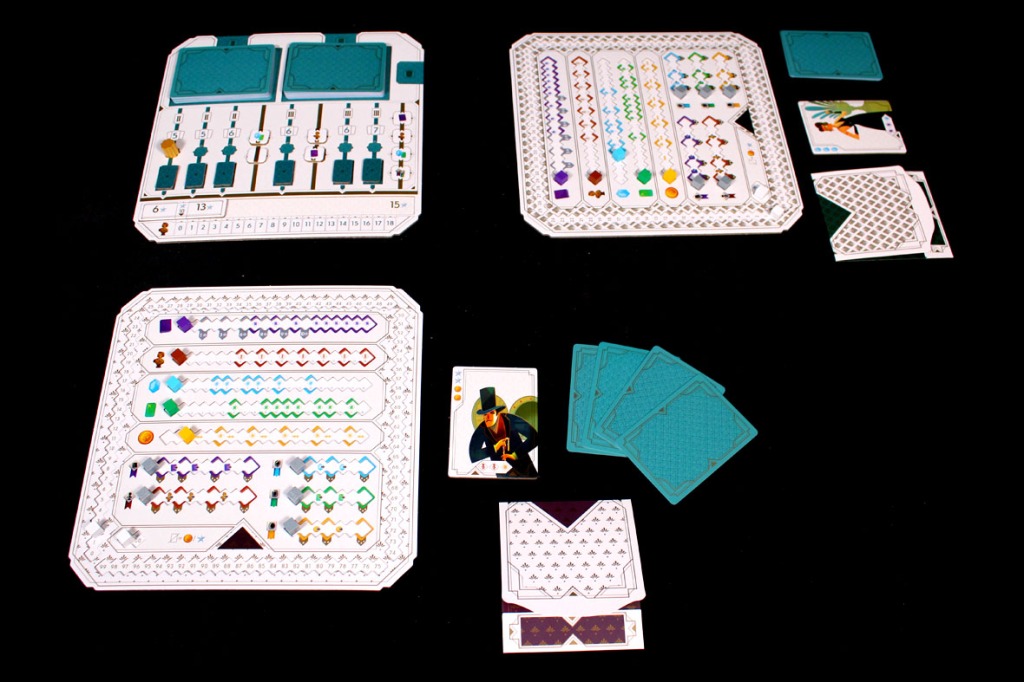
Gameplay
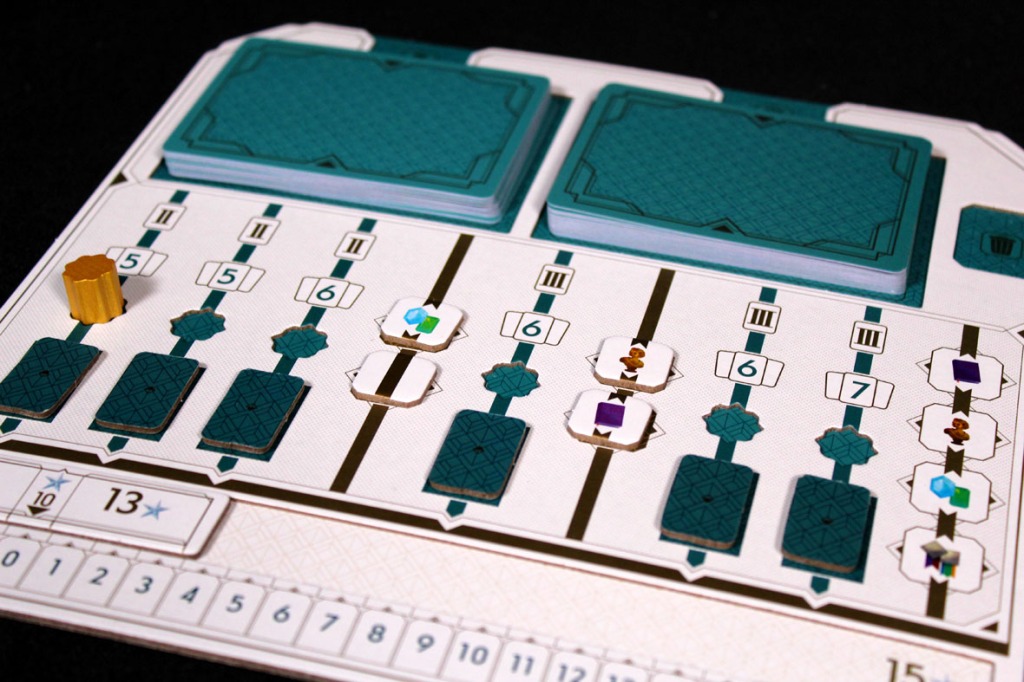
This one’s all about cutting and choosing! Each round, players will pass each other cards and use them to acquire goods and increase their scores. But be careful! Bad splits will hurt you a lot more than others.
To start a round, each player draws a card from the deck corresponding to the current Era. Then, they discard down to the printed hand limit on the cards. Now for the split! Set the cards in your hand in any order, and use the Splitter Card to divide them into two sets. They can be equal numbers of cards, equal numbers of symbols, or whatever you want! Feel free to live your truth. Then, pass them to another player. You always pass to the left and receive from the right. Once you do, you have a choice to make: which group of cards do you want to keep for yourself? Once you decide, pass the other group (and the Splitter Card) in the wallet back to your opponent.
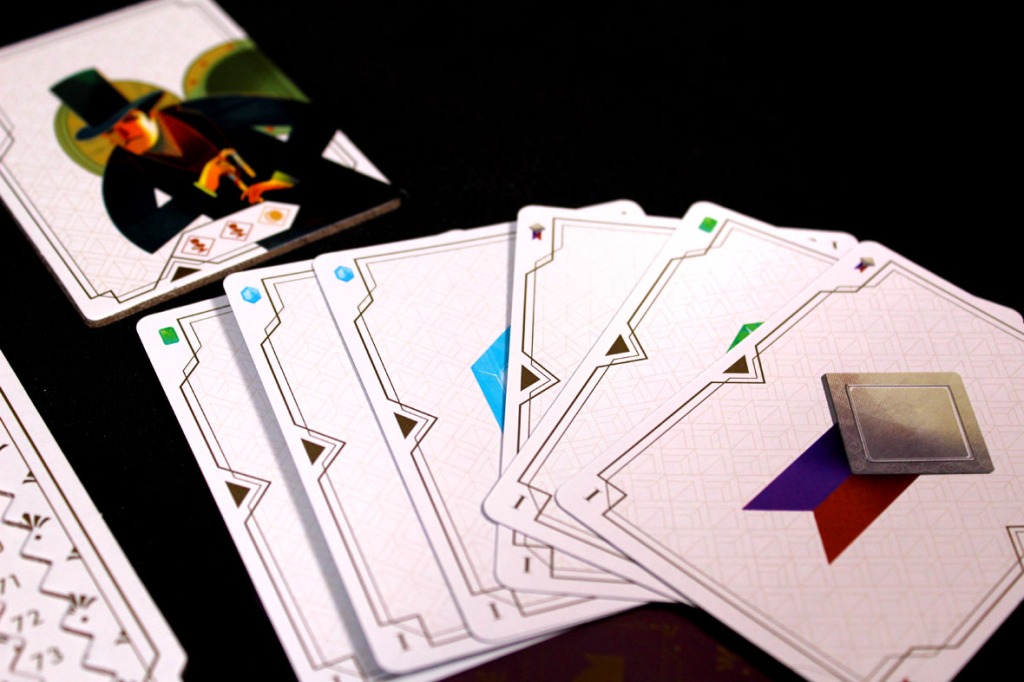
Now you’ll receive one of the groups you passed back as well! You have a stack of cards that you can add to your collection, now. Each card can be used for its printed value or one coin or one point. For cards with multiple Seals printed on them, you can use each Seal for a different category, though. Your Splitter is a wildcard and can be used to advance any one track. Certain spaces on the tracks can cause other tracks to advance, as well.
After each player has advanced their various tracks, reveal the Market token to advance the Art Market by the indicated number of spaces. Then, advance the Round Marker. If you advance the Round Marker over one of the middle lines, Midpoint Scoring occurs for the indicated item:
- Tomes: Every player scores the rightmost value on the Tomes Track that their marker has passed.
- Artwork: Every player earns points based on how many Artworks they have, relative to the position of the Art Market Tracker. You earn points for your bucket.
- Topazes / Emeralds: Each player earns two points per Topaz / Emerald they have, whichever is less.
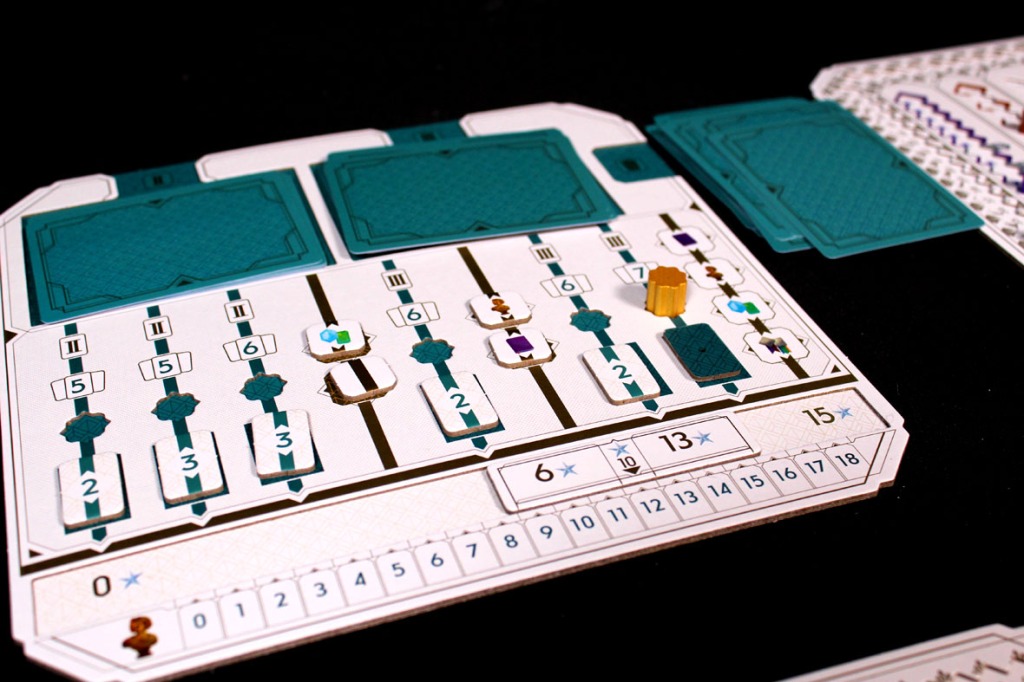
Once the Round Tracker advances to the end of the game, the game goes into final scoring! Re-score these three items, and give every player points equal to their Seals times the number of Contract Icons they have for each resource. The player with the most points wins!
Player Count Differences
None, effectively, until you get to two players. At any player count, the only players you can really affect are the players to your left and right, so adding more players doesn’t meaningfully impact what you’re doing at any point. I suppose that you could put some effort into figuring out how to discard cards that another player might need so that they cannot be inevitably passed those cards, but that’s not the kind of 5D chess that I’m going to end up playing here on What’s Eric Playing?. Instead, just focus on making sure the players next to you get worse deals than you get. At two players, the major change that emerges is that each round, in addition to drawing one card for the current Era, you also draw one card for the previous Era. This just means you’ll be cycling cards through your hand more frequently. Personally, I’ve quite enjoyed The Great Split at every count I’ve played at. It doesn’t seem explicitly designed for two, but it works quite well regardless.
Strategy
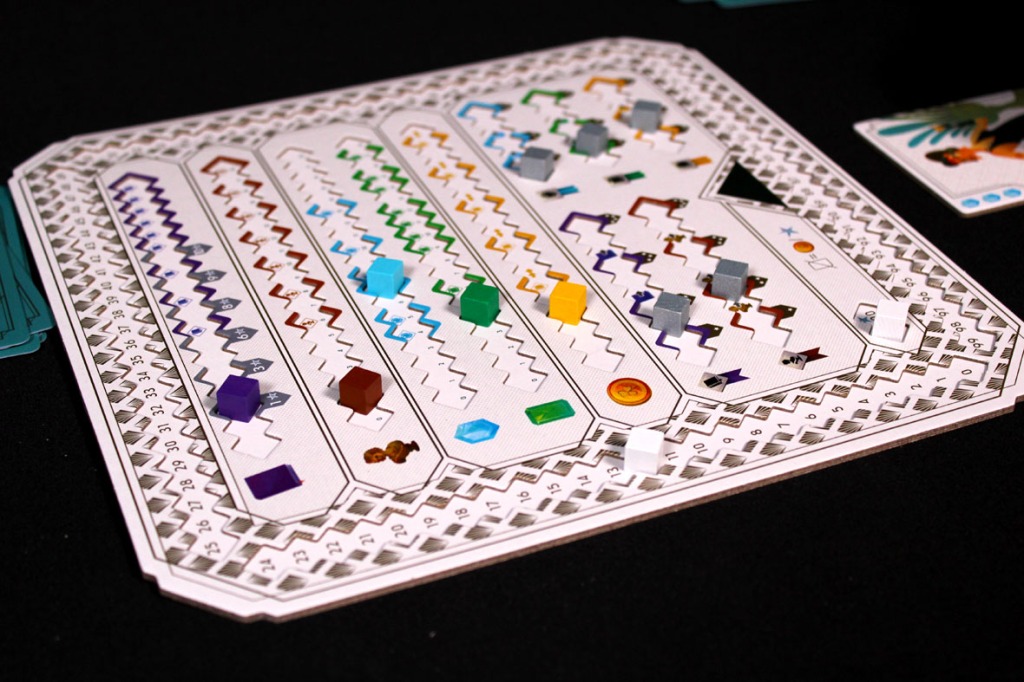
- Honestly, you need to figure out how to get your opponents to take what you want them to take. If you know what they are going to take, you can better plan for what you want to keep for yourself! Naturally, you don’t want to exclusively give them what they want; you need them to take things that won’t benefit them as much as the cards you’re keeping will benefit you. That’s just good business.
- Try not to overindex on one resource; it can lead to bad times later on in the game. If you fill up that track, you best believe you’re going to get offered a lot of those cards and be forced to trade them for just one point every time. It’s a good strategy, and if you see your opponent nearing the end of a track (or hitting it), offer them a lot of that card that they can’t use.
- Keep an eye on your Contracts; they can lead to big points! Especially the four-point ones; if you get a lot of the Seals, it can really add up (or, more accurately, multiply up, I guess?). The more the merrier.
- Also, you start with some Contracts, generally; lean into that. It’s not explicitly a winning formula, but they are things that your opponents cannot score or take away from you, so it should at least nudge you in a direction if you’re not sure what else to take.
- Try to get your resources in order before the midpoint scoring for some points. You don’t really want the turn you invest in Tomes to be the turn after you score them at the midpoint; then you’re just missing out on points you would have otherwise gotten, for instance. Try to get your emeralds and topazes as close as possible before the scoring, as well, so you can most efficiently double the lower of the two.
- Are point cards worth it? That’s a question for you, I guess. I generally lean no, but if you can get a bunch of them, you can make a bunch of points every round (or trick your opponent into taking a relatively low-value one-off point surge for a round).
- All the other resources score in different ways; use those to your advantage. You can use that to try and score a bunch of points in a variety of different ways, making any one particular route difficult for your opponents to completely block. The point salad of it all, I suppose.
Pros, Mehs, and Cons
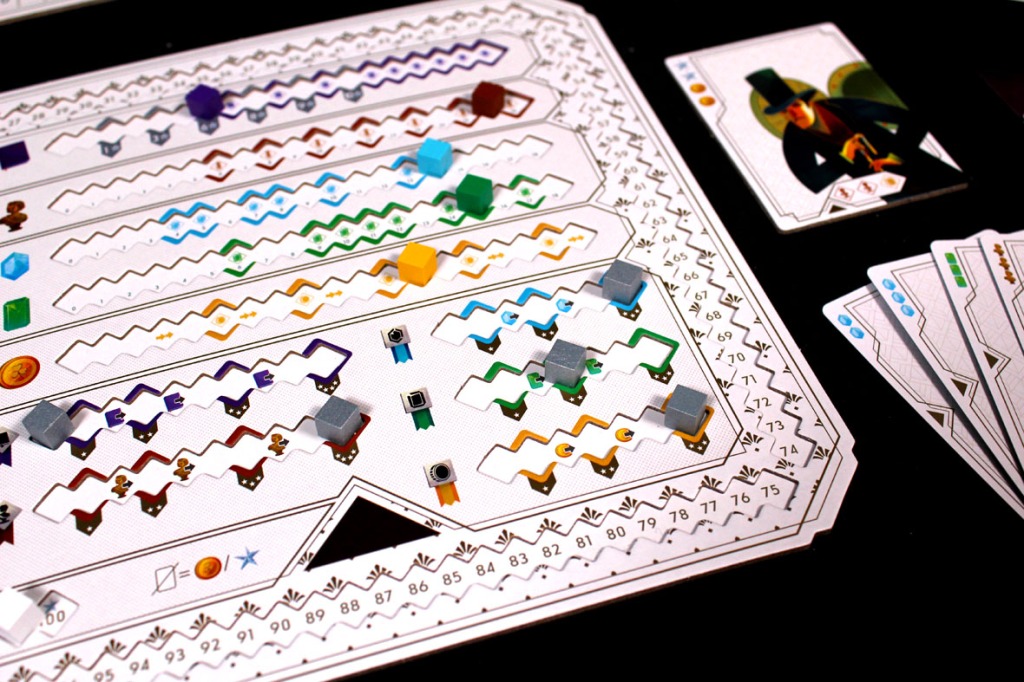
Pros
- The art style here is impeccable. It’s got both art deco and fresco going for it and I love it. The colors pop, the use of unlined shapes and sharp angles pops, and the general aesthetic is immaculate. I suppose the pieces could have been not-cubes to make things more exciting, but honestly, I’m willing to overlook that given how much everything else works.
- I also like that it plays well across player counts! I was skeptical about it at two players, but honestly, it still works really well! I mostly appreciate that there aren’t a ton of extra rules to make the game work for two, and it scales up nicely to accommodate multiple player counts without much extra overhead.
- There’s a lot of variability between different starting states, which can lead to different playstyles as you seek out different cards. You start with different starting values and starting hands and there are different times that certain things are scored. I’m loathe to call variability replayability, but I think the variety of possible scoring throughput options does give you different strategies to pursue every game.
- The variety of scoring styles for each object type is also interesting. Like I said, there’s a lot of different things going on and different ways to score big. It’s very clearly a point salad game, though; everything just kind of scores its own way.
- Pretty quick to pick up! As long as you know how everything does score, the core gameplay loop is pretty straightforward, which is nice.
- I enjoy that the “benefit” of each card can be pretty clear, which makes the cut a bit easier for me. That’s the biggest challenge of I-cut-you-choose for me: a lot of the cards have abstract value depending on the game, so I’m not sure how to value things and I end up making bad moves for myself. It’s also why I struggle with some auction / bidding games. Alas. Here, I can mostly conceptualize how things work, and I tend to offer pretty “even” deals, I think, and it’s largely been working out. Hence, I like it better!
- The splitter also being a wild card is pretty helpful. It’s just nice to always have access to at least one thing you want, no matter how the split works out. It’s a good bulwark against mediocre splits or bad luck.
Mehs
- Not sure what happened, but all my boards are warped as hell. They just kind of arrived with a pretty aggressive curve to them. Cardboard can be weird, sometimes.
Cons
- The art market shifting after you’ve taken actions and before scoring can be kind of annoying. It’s sort of a rug pull if you’re right on the cusp of scoring big, but I suppose that the market could shift 0 (not at all). The randomness of it makes it hard to react to strategically, though, which is a bit annoying. Kind of wish it moved at the start of the round, though I understand that could devalue Artwork (by making it impossible for some people to avoid getting 0, so it’s worth less to them).
Overall: 8.25 / 10

Weirdly enough, I actually like The Great Split a lot? There’s some context here that’s worth mentioning. I cut, you choose is one of my least favorite mechanics. I don’t like most of the I cut, you choose games I play, or I like them significantly less than games that use other mechanics. Part of the reason here is that I struggle with “abstract valuation”, or figuring out how much a particular cut of cards is worth in any of these games. (That said, I do like Hanamikoji, which plays with this space sometimes.) In The Great Split, it’s all so broken down and granular that I find it a lot easier to determine how valuable the hand I’m passing or receiving is. I know what I’m looking for, what I want, and how to get it, and that leads to a much more satisfying experience for me as a player. Granted, the sublime art deco stylings of the game go a long way, too. I love the art style. The player boards can be a lot because there are a lot of things to move and a lot of things to track, but that’s just the way things shake out sometimes. You do have a lot of different tracks to track and points to score in various ways. That may be intimidating for players who haven’t played a lot of point salad-style games before, so make sure to walk through how each thing scores, especially given that different tracks score at different times throughout the game. There’s a lot to manage, but also a lot to gain, and the game looks good as you’re making those gains. If you’re looking to try and figure out how to bolster your collection of fine things, you enjoy I cut, you choose, or you just want more art deco style games in your collection, I’d recommend The Great Split! I quite enjoy it.
If you enjoyed this review and would like to support What’s Eric Playing? in the future, please check out my Patreon. Thanks for reading!